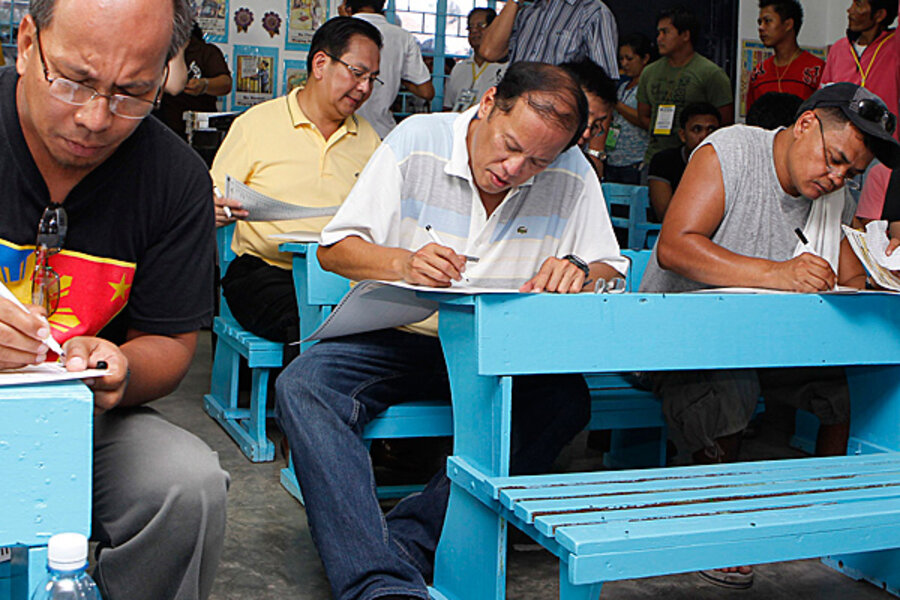Philippine election results: Voters test new electronic voting system
Loading...
| Manila, Philippines
Filipinos are awaiting Philippine election results after trooping enthusiastically to the polls Monday to elect a new president, Congress, and local governments, in what is turning out to be a gauge of the maturity of their country’s democracy.
The elections are a test not only of how Filipinos would like to see their country governed but also of the mechanism for choosing their government. For the first time, a computerized vote-counting system is being used, in an effort to stamp out the vote-rigging that has caused chaos in the past.
The Commission on Elections (Comelec) estimated that 85 percent of the 50 million-strong electorate turned out to vote, reflecting in part public interest in the novelty of computerization.
Comelec said only about 400 of the more than 80,000 machines malfunctioned during the polling. But there were reports of vote-counting machines malfunctioning in many voting precincts, in some cases causing ill-tempered scenes.
Voting machine malfunctions for top presidential candidate
Many voters complained about waiting in long lines, wilting in the scorching sun, as voters ahead of them struggled to understand new, computer-compatible ballot forms. Comelec kept the precincts open for an extra hour to accommodate the crowds.
Among those who were initially unable to vote because a machine malfunctioned was Benigno Aquino, a top presidential candidate. Early, unofficial tallies of a tiny percentage of the total vote gave Mr. Aquino the lead.
Aquino, feeding off the reputation for probity enjoyed by his late mother – ex-president Corazon Aquino, who toppled the dictator Ferdinand Marcos in 1986 – campaigned on an anticorruption platform. The administration of incumbent president, Gloria Arroyo, has been bedeviled by corruption scandals.
Aquino’s main rivals are ex-president Joseph Estrada, who was overthrown in 2001 for massive corruption, and property magnate Manny Villar.
Ms. Arroyo cannot run for president again, and there is suspicion among the opposition that it would be in her interest for this year’s election to be a complete failure, because that might allow her to cling onto power somehow.
The computerized vote-counting system has therefore been under intense scrutiny.
Aquino warns of 'people power' uprising
But the real test began only when the polls closed, because that was when the machines began to transmit the results to central servers. Comelec expects complete results within 72 hours.
Any delay is bound to raise suspicion that somehow the system is being manipulated, and any such suspicions are likely to pose another test of the maturity of Philippine democracy.
Another bane of Philippine elections is violence. The security forces said nine people had been killed in election-related violence on polling day.
Aquino has warned of another “people power” uprising, like those that ousted Mr. Marcos and Mr. Estrada, if he is cheated of victory.
Related stories:





